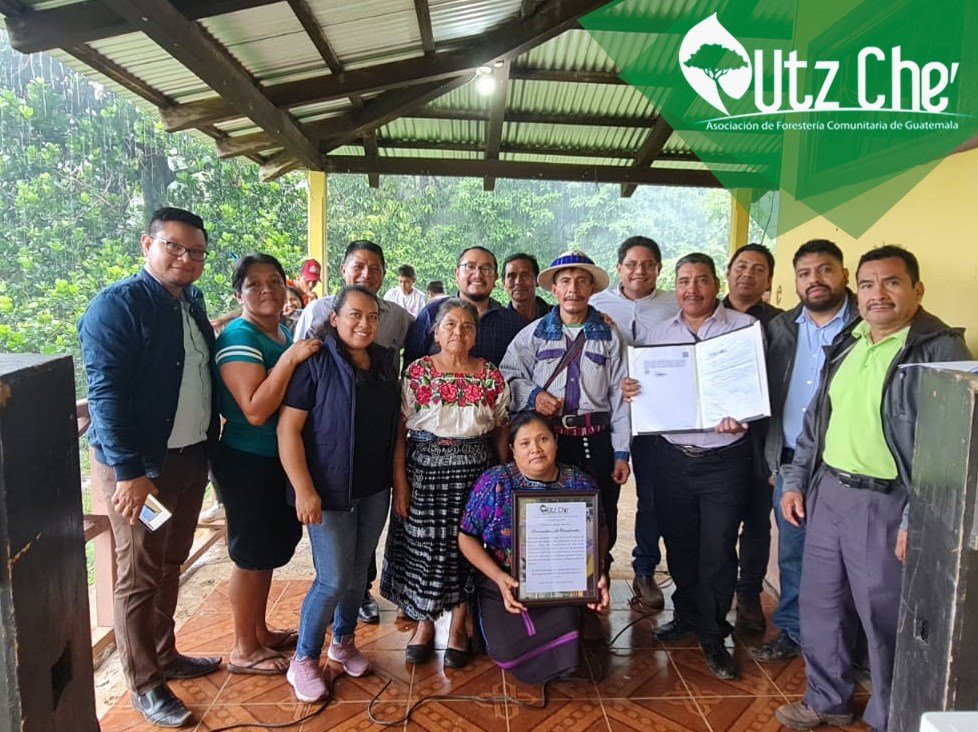Indigenous Sovereignty in Guatemala
By Daniela Bueso, Co-Director of the Central America Program
Utz Che´ staff and members of La Bendición during the commemoration of the twenty-first anniversary of the community, where they celebrate having resolved the payment of the agrarian debt of the territory they occupy and own since 2001.
For centuries, Indigenous People all over Latin America have struggled with colonization, displacement, territorial rights, and reclaiming their indigenous sovereignty. In Guatemala, the civil war (1960-1996), sparked the displacement of thousands of people across the country, forcing them to migrate to other neighboring countries. After the Peace Accords in 1996, many families returned from Mexico, where they had taken refuge. Upon their return, they found their lands were not reintegrated into their territories. This is how Utz Che’ was born, with groups of displaced communities that came together and applied to the Land Fund - a government organization focused on land access and sustainable development in Guatemala.
In 2011, over 100 displaced families self-organized to purchase a piece of land. These families came from the northern region of San Marcos and Huehuetenango, bringing an interesting combination of culture and language (Mam and Spanish), to build a community now known as “La Bendición”, Spanish for “The Blessing”. Today, approximately 75 families reside in La Bendición and the community continues to stand out for its strong leadership and capacity for self-management. These families undertook the task of looking for arable land in order to settle and start a new life. They strengthened themselves and managed to gain the support necessary to gradually change the community and make it more habitable.
View from the Communal Bunkhouse in La Bendición, overlooking the communal forest
After multiple years of fighting, La Bendición hit a huge milestone in June, 2022, when they finally celebrated having resolved the payment of the agrarian debt of the territory they occupy and own since 2001, a process of community struggle and perseverance for access to land in Guatemala whose conditions have represented challenges, sacrifices, and the exercise of rights. Now, the Communal Forest has a territorial extension of 569.6 hectares, adjacent to four local farms with multiple uses.
“Regarding the land, it is a relief to know that it is ours. Regarding the forest, it is life, because we, the community, have that relationship between community and the forest. We defend it, and we do work, we make fire breaks, and we take care of it, not because others incentivize us to do so, but because of the relationship that the community and people have with the forest. We know that from there we have water, we have air, and the forest is life for us in La Bendicion, as women, and as inhabitants of the community”.
-Lesbia Perez, Community Leader
Now, they get to reap the benefits of protecting the soil, watersheds, trees, flora and fauna, and finally get the right to self-determination, autonomy, and legitimacy as a sovereign community. Allowing them to regain their culture, language, social and legal systems, political structures, and relationships with their land.




